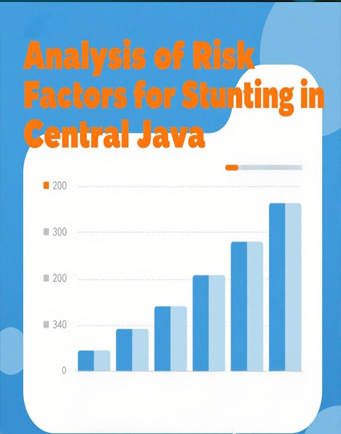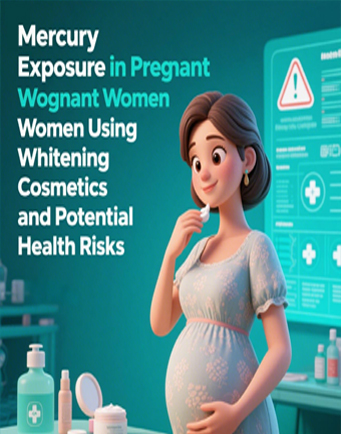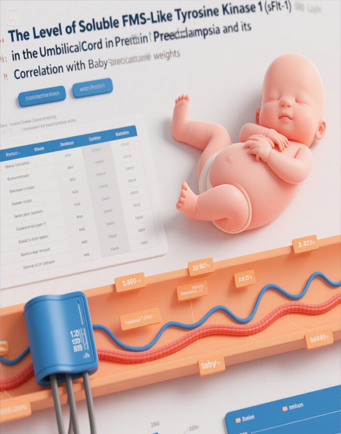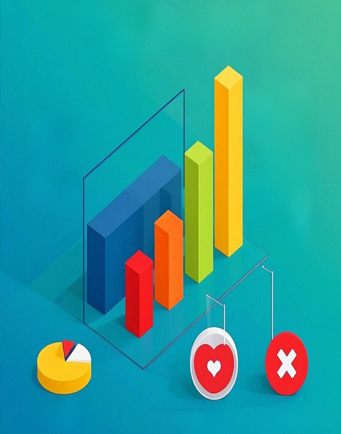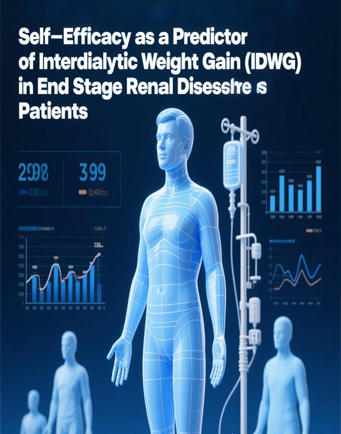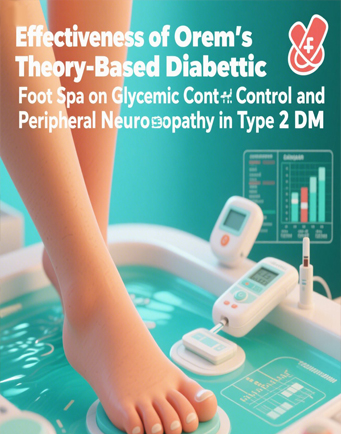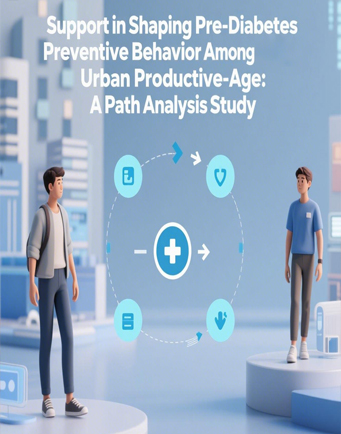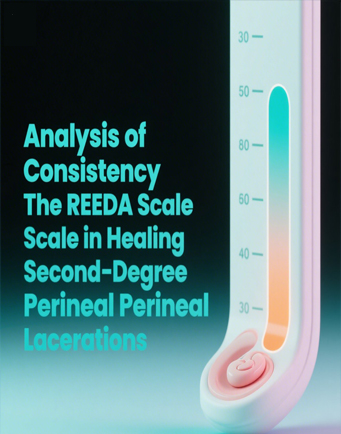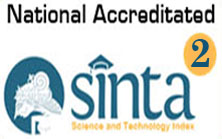Impact of Access to Mass Media and ICT on Knowledge of HIV Transmission During Pregnancy Among Women of Reproductive Age in the Republic of Fiji

Downloads
Access to accurate health information plays a pivotal role in shaping women’s awareness and practices regarding HIV prevention, particularly during pregnancy. Mass media and information and communication technology (ICT) serve as crucial platforms for disseminating knowledge that can reduce mother-to-child transmission of HIV. This study aims to examine the impact of access to mass media and ICT on women’s knowledge of HIV transmission during pregnancy. This study utilized secondary data from the 2021 Multiple Indicator Cluster Survey (MICS) in Fiji, conducted by the Fiji Bureau of Statistics in collaboration with UNICEF. A total of 3,649 women aged 15–49 years were included after excluding missing values. The outcome variable was knowledge of HIV transmission during pregnancy, while main independent variables were access to mass media and ICT, along with sociodemographic factors. Data analysis consisted of univariate, Chi-square test, and binary logistic regression, with significance set at p <0.05. The findings revealed that only 59.36% of women correctly identified that HIV can be transmitted during pregnancy. The findings revealed that only 59.36% of women correctly identified that HIV can be transmitted during pregnancy. Several factors were significantly associated with HIV knowledge, including internet use, mobile phone ownership, reading newspapers, age group, marital status, and education. Among these, internet use and reading newspapers were found to substantially increase the likelihood of having HIV knowledge, while higher education and older age served as strong predictors. In contrast, women from the richest households and those who had never married showed lower odds of being knowledgeable about HIV transmission during pregnancy. Access to mass media, ICT, age, marital status, and education significantly influenced women’s knowledge of HIV transmission during pregnancy. These findings highlight the need to integrate HIV education into antenatal care, community programs, and digital platforms to improve maternal knowledge.
Aboagye, R. G., Seidu, A.-A., Ahinkorah, B. O., Cadri, A., Frimpong, J. B., Hagan, J. E., Kassaw, N. A., & Yaya, S. (2022). Association between frequency of mass media exposure and maternal health care service utilization among women in sub-Saharan Africa: Implications for tailored health communication and education. PLOS ONE, 17(9), e0275202. https://doi.org/10.1371/journal.pone.0275202
Alhassan, R.H.A.H., Haggerty, C. L., Fapohunda, A., Affan, N. J., & Anto-Ocrah, M. (2025). Exploring the Use of Digital Educational Tools for Sexual and Reproductive Health in Sub-Saharan Africa: Systematic Review. JMIR Public Health and Surveillance, 11, e63309. https://doi.org/10.2196/63309
Allorant, A., Kuchukhidze, S., Stannah, J., Xia, Y., Masuku, S. S., Ekanmian, G. K., Imai-Eaton, J. W., & Maheu-Giroux, M. (2025). Socio-demographic and geographic disparities in HIV prevalence, HIV testing and treatment coverage: An analysis of 108 national household surveys in 33 African countries. Journal of the International AIDS Society, 28(8), e70024. https://doi.org/10.1002/jia2.70024
Bokop, C., Dhar, N., Izu, A., Thaver-Kleitman, J., Prabdial-sing, N., Ali, M. M., Akaba, G., Barsosio, H. C., Berkley, J. A., Beck, M. M., Chaka, T. E., Cutland, C. L., Dorji, P., Islam, M., Keita, A. M., Lema, F. B., Medugu, N., Mwakio, S., Obaro, S., … Madhi, S. A. (2025). Prevalence of hepatitis B virus infection among pregnant women and cord blood hepatitis B surface antigen positive newborns in sub-Saharan Africa and South Asia. Journal of Clinical Virology, 179, 105826. https://doi.org/10.1016/j.jcv.2025.105826
Dadzie, L. K., Gebremedhin, A. F., Salihu, T., Ahinkorah, B. O., & Yaya, S. (2024). Socioeconomic inequalities in uptake of HIV testing during antenatal care: evidence from Sub-Saharan Africa. International Journal for Equity in Health, 23(1), 4. https://doi.org/10.1186/s12939-023-02068-1
Fatema, K., & Lariscy, J. T. (2020). Mass media exposure and maternal healthcare utilization in South Asia. SSM - Population Health, 11, 100614. https://doi.org/10.1016/j.ssmph.2020.100614
Goga, A. E., Dinh, T.-H., Essajee, S., Chirinda, W., Larsen, A., Mogashoa, M., Jackson, D., Cheyip, M., Ngandu, N., Modi, S., Bhardwaj, S., Chirwa, E., Pillay, Y., & Mahy, M. (2019). What will it take for the Global Plan priority countries in Sub-Saharan Africa to eliminate mother-to-child transmission of HIV? BMC Infectious Diseases, 19(S1), 783. https://doi.org/10.1186/s12879-019-4393-5
Kandpal, K., & Dutta, P. (2024). Harnessing Mass Media and Media Education to Enhance Health Literacy on Maternal Health through IEC Materials. Медиаобразование, 3, 408–418.
Kassa, G. M. (2018). Mother-to-child transmission of HIV infection and its associated factors in Ethiopia: a systematic review and meta-analysis. BMC Infectious Diseases, 18(1), 216. https://doi.org/10.1186/s12879-018-3126-5
Kiplagat, J., Naanyu, V., Kamano, J., Vedanthan, R., Pastakia, S., & Wools-Kaloustian, K. (2025). Healthcare providers perspectives on HIV-NCD integration to Meet the needs of older adults living with HIV. BMC Geriatrics, 25(1), 599. https://doi.org/10.1186/s12877-025-06288-8
Leung, H., Shek, D. T. L., Leung, E., & Shek, E. Y. W. (2019). Development of Contextually-relevant Sexuality Education: Lessons from a Comprehensive Review of Adolescent Sexuality Education Across Cultures. International Journal of Environmental Research and Public Health, 16(4), 621. https://doi.org/10.3390/ijerph16040621
Mancone, S., Corrado, S., Tosti, B., Spica, G., & Diotaiuti, P. (2024). Integrating digital and interactive approaches in adolescent health literacy: a comprehensive review. Frontiers in Public Health, 12, 1387874. https://doi.org/10.3389/fpubh.2024.1387874
Mushamiri, I., Belai, W., Sacks, E., Genberg, B., Gupta, S., & Perry, H. B. (2021). Evidence on the effectiveness of community-based primary health care in improving HIV/AIDS outcomes for mothers and children in low- and middle-income countries: Findings from a systematic review. Journal of Global Health, 11, 11001. https://doi.org/10.7189/jogh.11.11001
Naidu, S. L., Heller, G. Z., Koroi, S., Deakin, L., & Gyaneshwar, R. (2017). Knowledge, attitude, practice and barriers regarding safe sex and contraceptive use in rural women in Fiji. Pacific Journal of Reproductive Health, 1(5), 223–231.
Obeagu, E. I., & Obeagu, G. U. (2025). Building a Healthier Future: A Narrative Review on Early Infant Diagnosis's Role in HIV Prevention. Health Science Reports, 8(3), e70591. https://doi.org/10.1002/hsr2.70591
Ojong, S. A., Temmerman, M., Khosla, R., & Bustreo, F. (2024). Women’s health and rights in the twenty-first century. Nature Medicine, 30(6), 1547–1555. https://doi.org/10.1038/s41591-024-03036-0
Okoye, H. U., & Saewyc, E. (2024). Influence of socio-contextual factors on the link between traditional and new media use, and young people’s sexual risk behaviour in Sub-Saharan Africa: a secondary data analysis. Reproductive Health, 21(1), 138. https://doi.org/10.1186/s12978-024-01868-0
Sa, Z., Tian, L., & Wang, X. (2021). Evidence for a Comprehensive Sexuality Education Intervention that Enhances Chinese Adolescents’ Sexual Knowledge and Gender Awareness and Empowers Young Women. Sex Roles, 85(5–6), 357–370. https://doi.org/10.1007/s11199-021-01223-8
Shah, T., Sidloski, M., & Toroca, E. (2021). Mapping the spatial variability of sexually transmitted infections across Fiji Health Regions. Pacific Health, 4, 1-15. https://doi.org/10.24135/pacifichealth.v4i.50
Silva, P., Araújo, R., Lopes, F., & Ray, S. (2023). Nutrition and Food Literacy: Framing the Challenges to Health Communication. Nutrients, 15(22), 4708. https://doi.org/10.3390/nu15224708
Sohn, M., & Jung, M. (2020). Effects of Empowerment and Media Use by Women of Childbearing Age on Maternal Health Care Utilization in Developing Countries of Southeast Asia. International Journal of Health Services, 50(1), 32–43. https://doi.org/10.1177/0020731419867532
Stormacq, C., Oulevey Bachmann, A., Van den Broucke, S., & Bodenmann, P. (2023). How socioeconomically disadvantaged people access, understand, appraise, and apply health information: A qualitative study exploring health literacy skills. PLOS ONE, 18(8), e0288381. https://doi.org/10.1371/journal.pone.0288381
Yaya, S., Uthman, O. A., Amouzou, A., & Bishwajit, G. (2018). Mass media exposure and its impact on malaria prevention behaviour among adult women in sub-Saharan Africa: results from malaria indicator surveys. Global Health Research and Policy, 3(1), 20. https://doi.org/10.1186/s41256-018-0075-x
Copyright (c) 2025 JURNAL INFO KESEHATAN

This work is licensed under a Creative Commons Attribution-NonCommercial-ShareAlike 4.0 International License.
Copyright notice
Ownership of copyright
The copyright in this website and the material on this website (including without limitation the text, computer code, artwork, photographs, images, music, audio material, video material and audio-visual material on this website) is owned by JURNAL INFO KESEHATAN and its licensors.
Copyright license
JURNAL INFO KESEHATAN grants to you a worldwide non-exclusive royalty-free revocable license to:
- view this website and the material on this website on a computer or mobile device via a web browser;
- copy and store this website and the material on this website in your web browser cache memory; and
- print pages from this website for your use.
- All articles published by JURNAL INFO KESEHATAN are licensed under the Creative Commons Attribution 4.0 International License. This permits anyone to copy, redistribute, remix, transmit and adapt the work provided the original work and source is appropriately cited.
JURNAL INFO KESEHATAN does not grant you any other rights in relation to this website or the material on this website. In other words, all other rights are reserved.
For the avoidance of doubt, you must not adapt, edit, change, transform, publish, republish, distribute, redistribute, broadcast, rebroadcast or show or play in public this website or the material on this website (in any form or media) without appropriately and conspicuously citing the original work and source or JURNAL INFO KESEHATAN prior written permission.
Permissions
You may request permission to use the copyright materials on this website by writing to jurnalinfokesehatan@gmail.com.
Enforcement of copyright
JURNAL INFO KESEHATAN takes the protection of its copyright very seriously.
If JURNAL INFO KESEHATAN discovers that you have used its copyright materials in contravention of the license above, JURNAL INFO KESEHATAN may bring legal proceedings against you seeking monetary damages and an injunction to stop you using those materials. You could also be ordered to pay legal costs.
If you become aware of any use of JURNAL INFO KESEHATAN copyright materials that contravenes or may contravene the license above, please report this by email to jurnalinfokesehatan@gmail.com
Infringing material
If you become aware of any material on the website that you believe infringes your or any other person's copyright, please report this by email to jurnalinfokesehatan@gmail.com.




